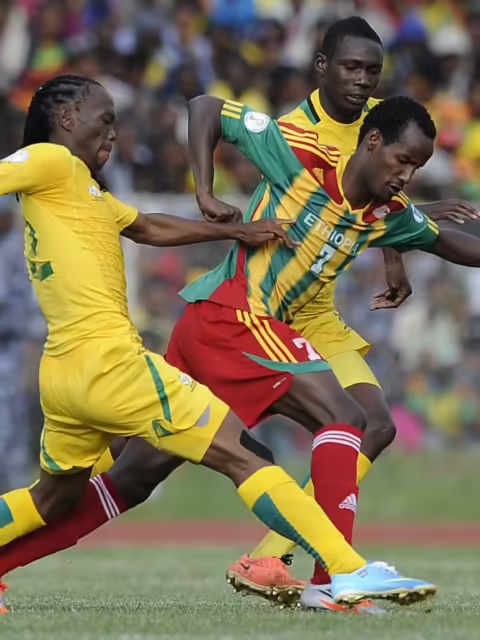In my opinion, if there are two words that can better explain the people of Ethiopia are “diversity” and “harmony”. This is obvious for one who has got the chance to visit the country north to south and east to west.
One can see people with different psychological makeup, lifestyles, following different religions, languages falling into semitic, cushitic, omotic and nilo-saharan groups.
There are more than 80 ethnic groups, 200 different dialects and many others which make the country a mosaic collection all mixed in a harmonious fashion.

Ethiopian “People’s Day” Festival
Dec. 9th was a special day for all Ethiopians; a day in which people representing each ethnic group in the country gathered in Awassa to celebrate an annual event ‘The People’s Day’. The day was celebrated not only in the country but in all Ethiopian embassies in different countries of the world.
Various cultural shows, photographic exhibitions and a day long musical concert were performed by each ethnic group.
There were also trade fairs and bazaars where indigenous products such as coffee, cultural ornaments etc. were displayed.
Besides celebrating our diversity, the event has brought about cultural exchanges among the various people groups. It was also a big moment to promote Ethiopia’s cultural and traditional heritage to the outside world.
To this effect, ambassadors of over 103 countries to Ethiopia were invited to attend the celebration and invitations were extended to many countries’ foreign representatives.

Awassa, The Host City
Located 273 km south of Addis Ababa, enjoying a moderate climate, Awassa was the perfect place to host this great event. Awasa is the capital of Southern Ethiopia in which 56 of the 80 ethnic groups including the popular Omo valley tribes like Hamer, Surma, and Mursi live. The region also houses important tourism spots like wildlife parks, lodges, big lakes and a number of recreation centers.

Ethiopian Cultural Costumes
An interesting part of the event is seeing the different ethnic and tribal groups each wearing its traditional costumes. The christian highland people wearing white cotton cloth whist the muslims of Harar, by contrast wearing very colorful dress, the men in shorts and the women in fine dresses of red, purple and black.
The lowland Somali and Afar were wearing long brightly colored cotton wraps. The Oromo horsemen were seen in their bead-decorated leather garments attiring themselves in lions’ manes or baboon-skin head-dresses also carrying spears and hippo-hide shields.
The Dorze and Wolaita were also great in their typical colorful woven clothes whilst the lower Omo tribes, almost naked, were decorated in a white bark belt and leather strap.
They were ornamented with notches, a short skin garment, and painted their bodies with artful designs adorned with jewelries made of bone and all sorts of metals.

Ethiopian Hair Styles and Jewelries
An apparent identification of these different groups is in their fanciful jewelry, hair styles and the embroidery of their clothes. The women of amhara and tigray were dressed with dozens of plaits (shuruba) tightly braided to the head and billowing out at the shoulders.
The Tigray women dressed their hair with a multitude of tiny plaits anchored to the scalp and bushing out on to the shoulders. They were also ornamented with earrings and three separate medallions of a necklace made from pure Ethiopian gold.
The lower omo tribes like Hamer, Geleb, Bume, and Karo men formed a ridge of plaited hair and clay to hold their feathered headgear in place.
The stylish Geleb people had shaved off their head except for their topknot covered with mud, a Colobus hair cap and ostrich feather.
The women of Harar parted their hair in the middle and had made a bun behind each ear. The Arusi women had fringes and short bobbing hair style whilst the Bale girls had the same but were covered with a black head-cloth.

Ethiopian Traditional Songs, Dances, and Musical Instruments
Traditional music was the other exciting part of the festival which every ethnic group was performing its own distinct music. From the popular Iskista (juddering the shoulders ‘up and down’ and ‘to and fro’) to the jumping and leaping up and down of omo tribes, all sorts of cultural music was played by each ethnic group.
Traditional musical instruments were also widespread including the massinko – a one stringed violin played with a bow and the kirar – a six stringed lyre played with the fingers or plectrum.
Also to be heard was the washint – a simple flute, the kebero – a drum played with the hands and the atamo – a long flute played by tapping with the fingers or palm.
The celebration was amazing. It has left every one with a great excitement exhibiting the Ethiopia’s diverse people and culture – all at the same time and in the same place.











